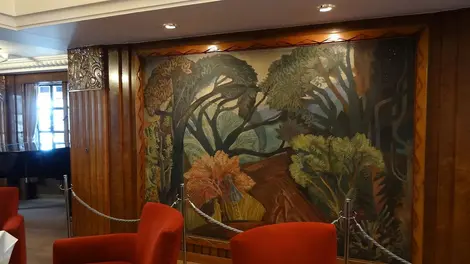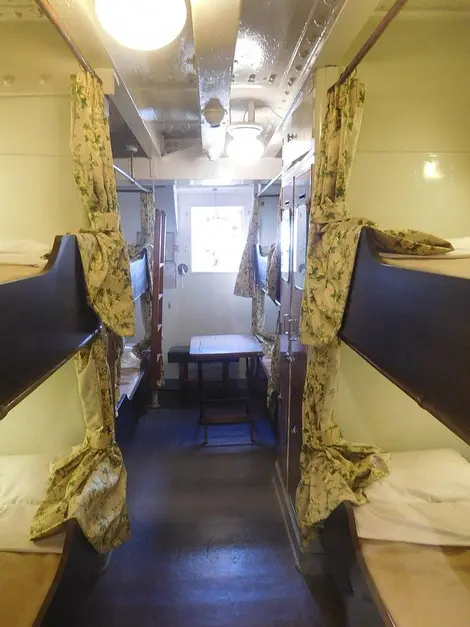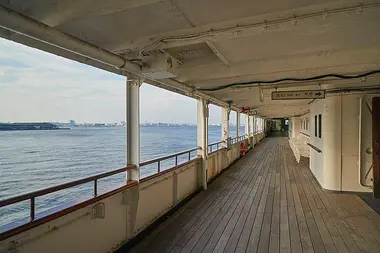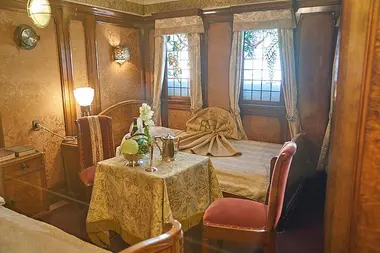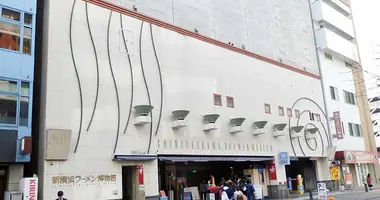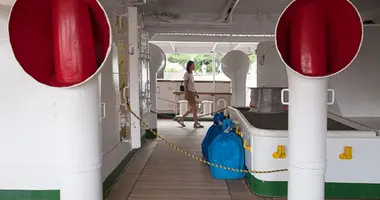Hikawa maru 氷川丸
- Published on : 21/01/2019
- by : S.V.
- Youtube
The Queen of the Pacific
When it left the shipyards of the Yokohama Dock Company in 1929, nothing foreshadowed the extraordinary destiny of the Hikawa Maru . Moored in the port of Yokohama , this luxury liner, converted into a hospital ship, a freighter, then a museum, is today a symbol of the port city.
The steel vessel
The Hikawa Maru, a luxury ship from the shipping company Nippon Yusen Kabushiki Kaisha (NYK), is a giant of the seas; measuring 163 meters long and weighing more than 11,000 tons which owes its name to the Hikawa Shrine, an important Shinto shrine in Saitama.
Commissioned on the regular Yokohama-Vancouver-Seattle route in May 1930 , this ultra-modern and sleek ocean liner, equipped with the latest diesel engine technology, is capable of reaching a top speed of 18.38 knots (34 km/h). ). The top-of-the-range services it offers to its wealthy clientele have earned it the nickname "Queen of the Pacific" . Retired in 1960 , he returned permanently to Yokohama where he was used as a youth hostel for ten years .
Designated " Important National Cultural Property " by Japan in 2016, it is now a fabulous museum ship that can be visited for the modest sum of 300 yen (€2.40).
- To read: A day in Yokohama
Much more than a liner
Officiating for 30 years, the Hikawa Maru has allowed 25,000 passengers to travel on Pacific waters by making more than 250 crossings. But know that he allowed much more.
At the start of the Second World War, before Japan took part in the conflict, the Japanese authorities requisitioned the building to allow their expatriate nationals to evacuate Canada and the United States . At the same time, Jewish refugees make the crossing in the opposite direction . Indeed, the latter flee Europe for North America via Japan aboard the Hikawa Maru. In October 1941, the liner was the last Japanese ship to anchor in an American port before the attack on Pearl Harbor a few weeks later.
The ship is then transformed into a hospital ship and adorned with huge red crosses on its sides. He thus repatriated nearly 3,0000 wounded soldiers in the archipelago . During these years of war, the ship managed to miraculously survive three mine attacks. It is one of the only two surviving liners of the Japanese fleet at the end of the conflict.
In 1947, faced with the shortage of boats, she was refitted as a freighter for the freight of goods . This third life only lasts a few years but gives the ship an essential economic role.
Civilian passengers eventually reunite with the Hikawa Maru for regular services to Seattle in 1953.

The Hikawa Maru has been moored in Yokohama Port since 1960
Nesnad / Wikimedia
- To discover: Night walk in Yokohama
A dream setting
A visit to this monument of modern Japanese history is essential during a stay in Yokohama. And just looking at it from the outside can't do it justice. You have to walk on the bridge and enter this place steeped in history to fully appreciate it at its fair value.
And if the introductory video and the exhibition spaces perfectly illustrate daily life on board, there's nothing like visiting the dining room to imagine sharing a wonderful dinner at the captain's table during the cruise. inauguration. The passenger cabins, the lounges, the smoking room lit by a splendid colored glass roof, the children's playroom, the offices and accommodation reserved for the staff, the decks which hosted tennis competitions ; you have to admire each of these places.
It is also an opportunity to see the contrast between the 1st class cabins with bathrooms with bathtubs and the cramped 3rd class cabins where 8 passengers sleep in bunk beds. If the "Queen of the Pacific" was renowned for the finesse of her cuisine, she was also renowned for her wonderful interiors created by the French decorator Marc Simon . The lights, the woodwork, the stairs are in the purest Art Deco style .
The visit to the engine room, meanwhile, allows you to appreciate the quality and technicality of Japanese shipbuilding in the 1920s. A valuable testimony to modern maritime transport.
Address, timetable & access
Address
Phone
(+81) 45-641-4362Timetable
3 minutes on foot from Exit No. 4 of Motomachi-Chukagai Station on the Minatomirai LinePrice
Adult: 300 yen (2.40 €) Child: 100 yen (1 €)Access
Open from 10 a.m. to 5 p.m. Closed on Mondays.Website
https://www.nyk.com/rekishi/e/exhibitions/hikawa.htm




